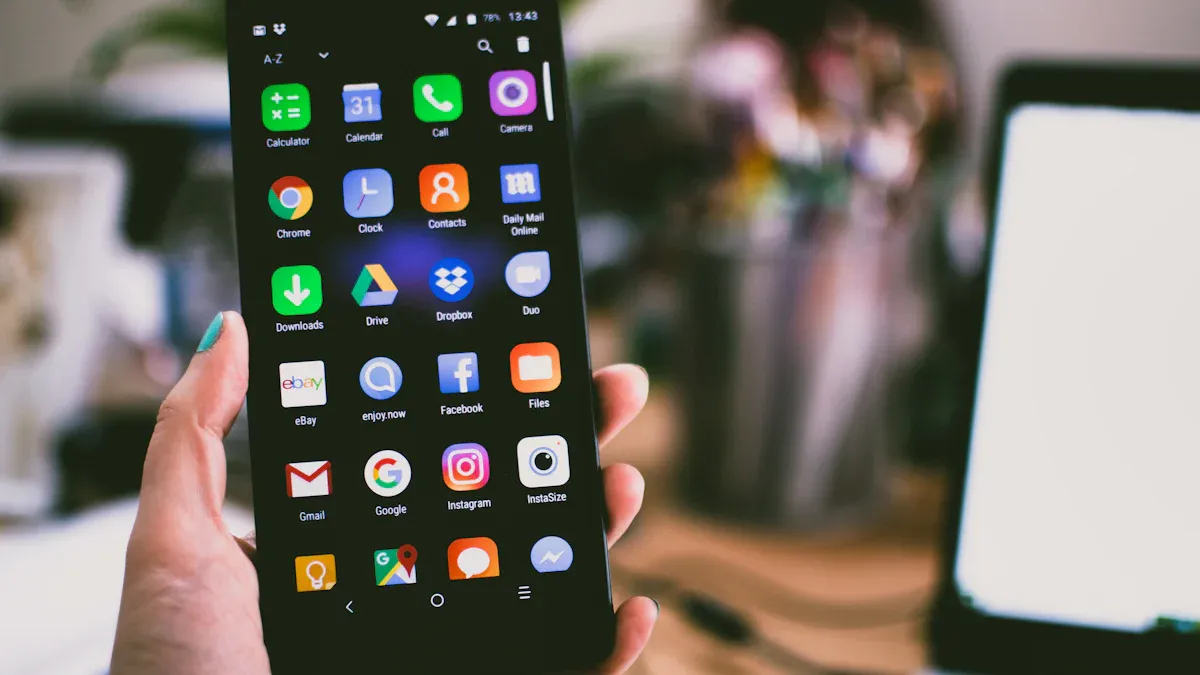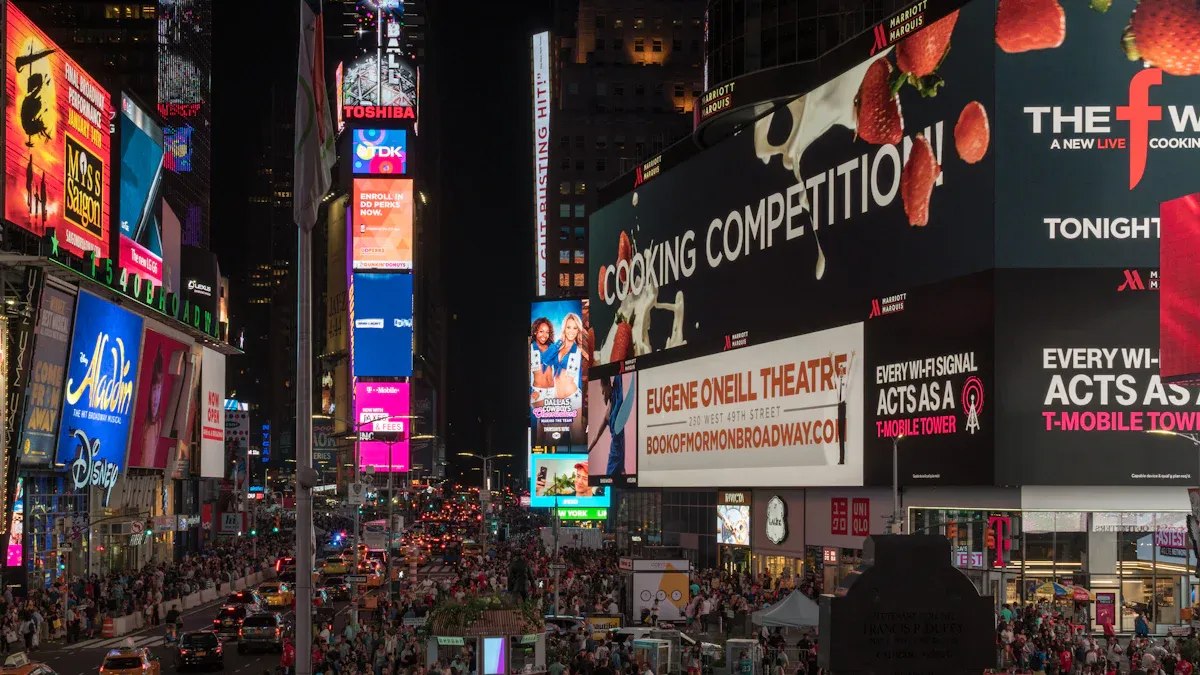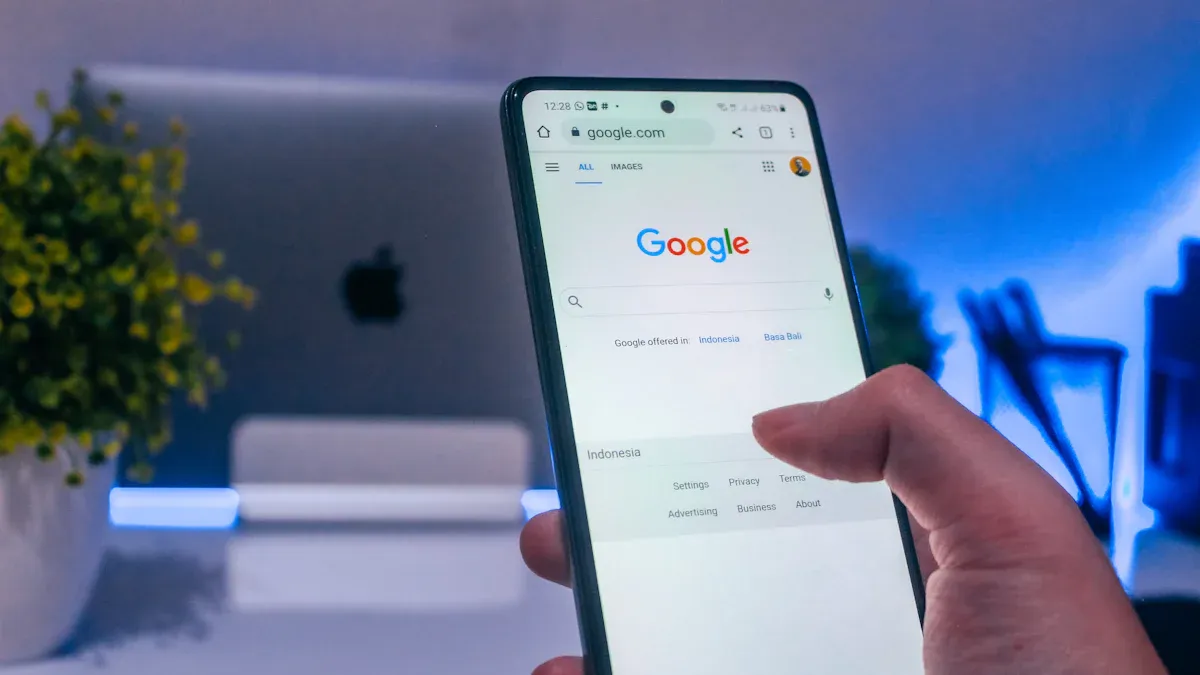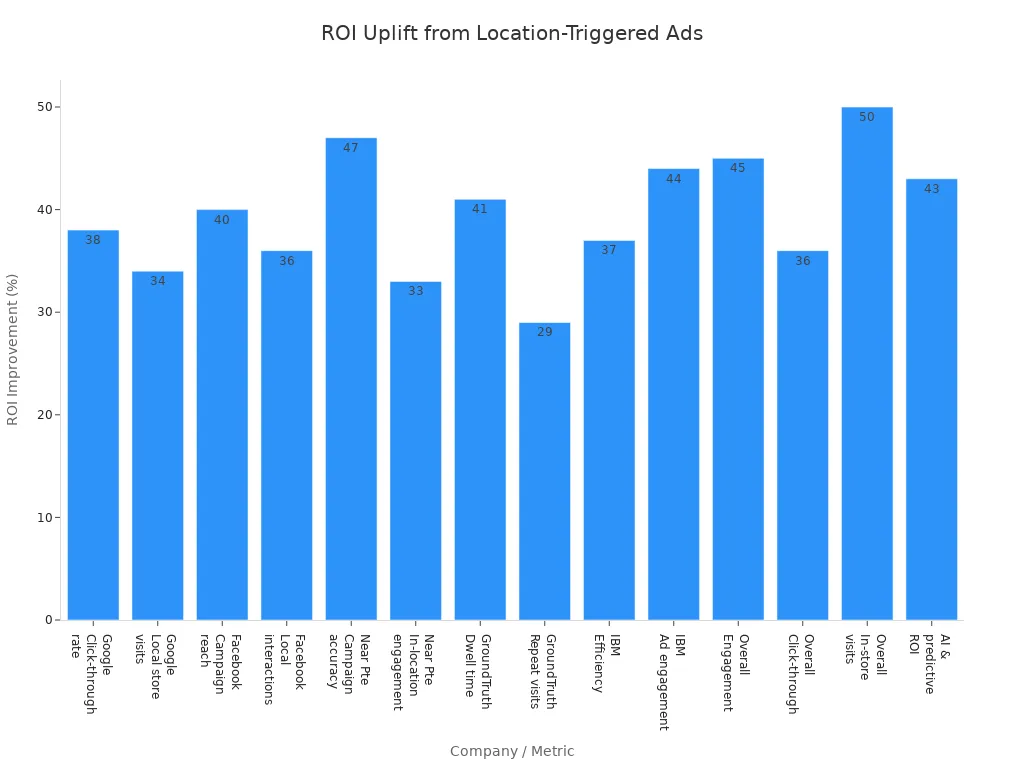
Location-triggered ads in mobility places, including advertising machines, generate significant revenue. The location-based advertising market earned $81.7 billion in 2022 and continues to grow at a rate of 14% annually. Geofencing accounts for more than 37% of this revenue. Brands leverage AI and real-time mobility data to enhance their campaigns, enabling up to 20 times more people to notice their ads. Retail conversion rates increase by 20% compared to traditional ads. Understanding how people move further boosts engagement, leading to more coupon usage, higher spending, and increased store visits.
Key Takeaways
Advertising machines have digital screens in busy areas. They show ads that fit where people are. This makes the ads easier to see and more useful.
Location-triggered ads use real-time movement data. They use GPS and geofencing technology. These ads send messages at the right time. The messages are personal. This helps stores get more visits and sales.
These ads give strong returns. Some campaigns earn up to six times more than old ads. They also help customers pay more attention.
Brands need to balance personal ads with privacy. They should be clear about how they use data. They must follow the law. They should let users control their data. This helps build trust.
To do well, companies should buy smart technology. They need good data partners. They should keep making ads better. They must also respect customer privacy.
Advertising Machines in Mobility

What Are Advertising Machines?
Advertising machines are digital screens that show ads in public places. Companies put these machines where many people pass by, like train stations, airports, and bus stops. The screens show ads to people who are moving around. Some machines have sensors or cameras to collect information about the area. Others use the internet to change ads quickly. Many machines use location data to show ads that fit what people nearby might like. This helps brands reach people when they are paying attention.
Advertising machines come in many shapes. Some look like kiosks or big digital signs. Others are touchscreens or panels inside vehicles. Companies pick the type of machine based on where it will go and who will see it. These machines can show videos, moving pictures, or let people touch the screen. This makes them a good choice for today’s advertising.
Role in the Mobility Market
Advertising machines are important in the mobility market. They help brands talk to people as they travel. Their job is more than just showing ads. These machines and their tools help brands do better in the mobility world. They use data and math to see how well ads work. Teams make plans to measure ads for people on the move.
They use careful studies and tests to make ads work better.
Working with product and R&D teams helps build new ways to measure ads.
Analytics show how different ads do on digital platforms.
Knowing a lot about digital ads helps teams find smart ways to help brands.
Advertising machines help brands learn what works and what does not. This helps brands make better ads and grow in the mobility market.
Location-Triggered Ads

How They Work
Location-triggered ads use mobility intelligence to find people as they move. These ads use real-time movement data to pick the best times and places. Marketers watch how people travel and where they spend time. This helps them make campaigns that fit daily habits.
Mobility intelligence looks at movement patterns to find busy spots.
Marketers make audience groups using real-world location data.
Ads show up when people enter or leave places like train stations or malls.
The system checks results by tracking foot traffic and store visits.
Companies use correct and safe data to keep privacy and get better results.
This way, ads are more useful. People see messages that match where they are and what they need. Brands can also check if their ads work by seeing if more people visit stores after seeing an ad.
Key Technologies
Many technologies help location-triggered ads work. Each one helps send the right message at the right time.
GPS finds a person’s exact spot using their phone.
Geofencing makes invisible lines around places like malls or stadiums. Ads show up when someone crosses these lines.
Beacon technology uses Bluetooth to send messages to phones nearby.
Assisted GPS and CellID make location more exact, even in crowded cities.
5G networks make location services faster and more steady.
Note: These tools work together to help brands reach people with messages at the right time. They also help brands measure and report how each campaign does.
Profitability
ROI Metrics
Advertisers use different ways to check if ads make money. These ways help brands see if their ads work well or need changes.
Cost per Click (CPC): This shows how much each click costs. Brands watch this to keep spending smart.
Return on Ad Spend (ROAS): ROAS tells how much money comes from each dollar spent. A high ROAS means the ad is doing well.
Cost per Acquisition (CPA): CPA shows the price to get a new customer. Lower CPA means ads are working better.
Engagement Rate: This counts how many people click or watch the ad. High engagement means people like the ad.
Attribution Modeling: This gives credit to each step before someone buys. It helps brands know which ads help most.
Customer Lifetime Value (CLV): CLV shows how much money a customer brings over time. Brands use this to plan for the future.
Incrementality Testing: This checks if ads really make a difference. It helps brands spend money on ads that work best.
Advertisers also look at how much it costs to get customers, how much people spend, and how long they stay loyal. All these ways together show if ads are doing a good job.
Market Growth
The market for location-triggered ads in mobility is growing fast. Experts think the location-based services market in the U.S. will grow 20% each year from 2024 to 2034. The world market for location-targeted mobile ads is also getting bigger, with a 14% yearly growth from 2023 to 2030.
Period | CAGR (%) | Market Size (USD Billion) | Notes |
|---|---|---|---|
2023 to 2030 | 14 | N/A | Overall Location Targeted Mobile Advertising Market growth |
2024 | N/A | 40 | Estimated market size |
2026 to 2033 | 16.5 | N/A | Growth rate for 2026-2033 period |
2033 | N/A | 150 | Expected market size |
Hyper-contextual Targeting Sub-segment | 18 | N/A | Fastest growing sub-segment |
Healthcare Sector Application | 20 | N/A | Fastest growing application sector |
This fast growth shows that people trust advertising machines and location-triggered ads. Brands use these tools to reach more people and sell more.
Case Studies
Real-life stories show how advertising machines with location-triggered ads help brands make more money and connect with people.
Campaign / Company | Description | Outcome / Metrics |
|---|---|---|
Tourism British Columbia (2009) | Location-based mobile ads targeting travelers with banner ads, search keywords, and mobile messaging. | Increased travel by 0.3%, travel revenue up by $25 million (1.6% increase), won 2010 CMA Award. |
7-Eleven by Horizon Media & PlaceIQ | Geofencing around stores to measure impact of out-of-home ads on store visits using mobile location data. | Demonstrated measurable increase in store visits linked to location-triggered ads. |
Fast Food Company | Banner ads and ‘store locator’ takeover ads served near meal times. | 3x higher click-through rate; store locator clicks rose from 2% to 7%; 6% increase in usage; ROI $9.18 per $1 spent vs $1.40 standard. |
Technology Hardware Company | Mobile campaigns targeting potential customers near product locations. | CTR increased from 3.3% to 6.4%; 17% increase in virtual product try-on; expanded location-based campaigns. |
Tesco (UK) | QR code-based mobile promotions delivering offers in-store. | 800,000 impressions, 115,000 interactions in 2 months; 27% unplanned store visits from promotions. |
These stories show that location-triggered ads can get up to 20 times more attention than old ads. For example, using mobility data for ads brings back $5.97 for every dollar spent. Some ads made store visits go up by 50%. Big brands like Google, Facebook, and IBM see more clicks, more visits, and better results with location data.

Mobile location data helps brands send the right message at the right time. This brings more people to stores, more sales, and happier customers. Advertising machines help by showing ads that match where people are and what they want.
Benefits
Hyper-Targeting
Hyper-targeting helps brands find the right people at the best time. Marketers use location data to focus on people near stores or rivals. This method brings more people to stores by sending offers to those close by. Brands can use geo-conquesting to win customers from other businesses. They also use behavior data to show ads that fit what people like. Beacon marketing helps reach people in places with weak cell signals. These tools make ads more useful and help more people buy. KFC used this idea to share a new product. They got more visits by showing ads to people near their stores and rivals. Hyper-targeted ads often bring more sales and happier customers.
Note: Hyper-targeting builds trust by keeping privacy and being open in campaigns.
Engagement
Location-triggered ads help people pay attention by showing messages when they matter most. Almost 9 out of 10 marketers saw more sales from location-based ads. Customer groups grew by 86%, and engagement went up by 84%. Starbucks and Ulta Beauty used geofencing to send offers to people near their stores. This brought more visits and helped them reach goals faster. Hyundai made people think better of their brand by showing ads near rival car dealers. These stories show that advertising machines can give timely, personal ads that get noticed and make people act.
Personal offers bring more people to stores.
Timely messages help customers connect.
Good ads make people like brands more.
Measurement
Advertisers check if location-triggered ads work by using smart data tools. They mix correct Points of Interest (POI) data with mobility data to make good audience groups. Polygon-based POI geofences help track visits and link them to ads. By adding location data to behavior, brands learn more about what people do. Companies like Media Storm and InMarket use these ways to prove ads work. They update POI data often and study results to avoid mistakes. This helps advertising machines give real value and lets brands spend money wisely.
Challenges
Privacy
Many people worry about how companies use their location data. In 2022, a study found 81% of Americans feel they cannot control their personal information, including location data. People sometimes share their location without knowing it. This can happen when they allow app permissions they forget about. Geotagging can also be risky. It might show when someone is not at home. Companies are not always clear about how they collect and use data. This makes people feel nervous. Most people want ads that match their needs. But they also want their privacy respected. They want to choose what data they share. Companies need to balance making things easy and keeping privacy. This helps build trust and makes location-based ads work better.
Note: Being open and giving users choices helps build trust in mobility advertising.
Implementation
Setting up advertising machines with location-triggered ads is hard. Brands have trouble joining different data sources and keeping data good. Many businesses find it tough to use new marketing tools. This is even harder for small companies with less money. Adding new technology to old systems can slow things down. It can also make the results weaker. Brands must keep making new ideas because of competition. Tracking customers online and offline is tricky. It gets harder with Mobility on Demand services. Brands also need to study how customers react. They must change for new user groups and new technology.
Operational Challenge | Explanation |
|---|---|
Brands must be open and get user consent to keep trust and follow rules. | |
Accuracy of Location Data | Wrong data can waste money and bother customers. |
Technical Challenges | Setting up GPS, beacons, and apps costs money and takes time. |
Legal and Regulatory Issues | Different places have strict rules, so brands must work hard to follow them. |
Regulation
Rules decide how advertising machines use location data. Laws like GDPR and CCPA have strict rules for using personal information. Brands must follow these laws to avoid fines and keep trust. They should only collect the data they need and keep it safe. Limiting who can see sensitive data and using strong passwords helps protect users. Brands should check that their partners are safe too. Regular checks and training help everyone know the best ways to stay safe. Companies like Magnite show good examples. They have privacy officers and clear rules for handling data. Following industry rules and being open with users helps brands follow the law and build trust.
Recommendations
Best Practices
Invest in Technology
Brands should spend money on new technology like AI and machine learning. These tools help companies know what customers want. They also make advertising machines work better. Smart technology lets brands grow and keep up with new ideas.Utilize Data Analytics
Brands should collect and study data about what users do. This builds strong data networks. It helps brands make better choices and get more users. Data analytics shows which ads work best. It also helps pick the best places for advertising machines.Optimize Pricing Models with Dynamic Pricing
Dynamic pricing helps brands change prices when things get busy. This lets companies earn more money and use their resources well.Leverage AI-powered Data Analytics
AI and machine learning can guess what will happen next. They help make things run smoother and waste less. This makes campaigns earn more money.Implement Digital Platforms
Digital platforms give real-time data for quick choices. They also make service better. This can help brands keep customers and earn more.
Tip: Brands that follow these steps often make more money and have happier customers.
Technology Partners
Brands should check where location data comes from and if it is good. Data from their own apps is better than from others.
Getting real-time location signals is important. Location SDKs track users all the time and see how long they stay.
Brands need partners who help with personalization and automation. This means sending messages or emails based on where users are.
Cross-device and omnichannel addressability lets brands reach users on many devices. They use things like Mobile Advertising IDs.
Good partners have strong measurement and attribution tools. These tools show if ads lead to real visits and what works best.
Transparency and verification of location data are very important. Brands must trust their partners to give honest data.
Partners should give tools for campaign management and support. This helps brands run and improve their ads.
Brands must balance user experience and privacy. Ads should help people, not bother them, to keep trust.
Criteria for Technology Partners | Why It Matters |
|---|---|
Data Source and Quality | Makes sure targeting is right |
Real-Time Location Signal | Helps with timing and being useful |
Personalization and Automation | Sends messages that fit each person |
Cross-Device Reach | Lets brands reach more people |
Measurement and Attribution | Shows if campaigns work |
Transparency and Verification | Builds trust and keeps data safe |
Campaign Management Tools | Helps make ads better over time |
User Experience and Privacy | Keeps trust and follows rules |
Balancing Personalization
Brands need to make ads personal but also follow privacy rules. The FTC says exact location data is sensitive. Companies must ask users before collecting this data. They should say if tracking is one-time or always and explain why they need it. Brands must only use location data for the service promised.
Data clean rooms help brands use customer data safely. These places let companies make personal ads and follow privacy laws. By using encrypted and hidden data, brands can show the right ads and keep user privacy safe.
Note: Being clear and keeping data safe helps brands build trust. These steps make sure advertising machines help without risking privacy.
Location-triggered ads make digital screens useful for showing ads to the right people at the best time. Brands get more people to notice their ads and make more money by using smart plans, changing prices, and aiming ads carefully. To do well, companies should use geofencing, mix different kinds of data, and obey privacy rules. Training workers often and having easy-to-understand rules help keep trust and follow the law. These actions let brands try new ideas and keep customer data safe.
FAQ
What makes location-triggered ads more effective than traditional ads?
Location-triggered ads find people in the right spot. They show messages when people are nearby. Brands use real-time data to pick the best moment. This helps more people notice the ads. More people go to stores after seeing these ads. Studies say these ads work up to 20 times better than old ads.
How do advertising machines protect user privacy?
Advertising machines follow strong privacy rules. They only collect the data they need. They use encryption to keep information safe. Brands ask people before tracking their location. They do regular checks and have clear privacy rules. This helps customers trust them.
Which industries benefit most from location-based advertising?
Retail, food service, travel, and healthcare do well with these ads. These groups use mobility data to find people close by. Quick-service restaurants and stores see more sales. They also get more people coming in after using these ads.
What challenges do brands face when using advertising machines?
Brands deal with tech problems and privacy worries. They must follow laws like GDPR and CCPA. Setting up machines and joining data can be tough. Brands need to balance new ideas with trust and following rules.
Can small businesses use location-triggered ads effectively?
Small businesses can use these ads with good partners. Many platforms have easy tools for local targeting. These ads help small brands reach people nearby. They can also check results fast.
Tip: Begin with simple ads and watch how they do to get better.
See Also
Budget-Friendly Portable CarPlay Solutions Suitable For All Drivers
Leading Developments Influencing Wireless Android Auto Adapters
Best Wireless Android Auto Adapter Reviews And Comparisons 2025
